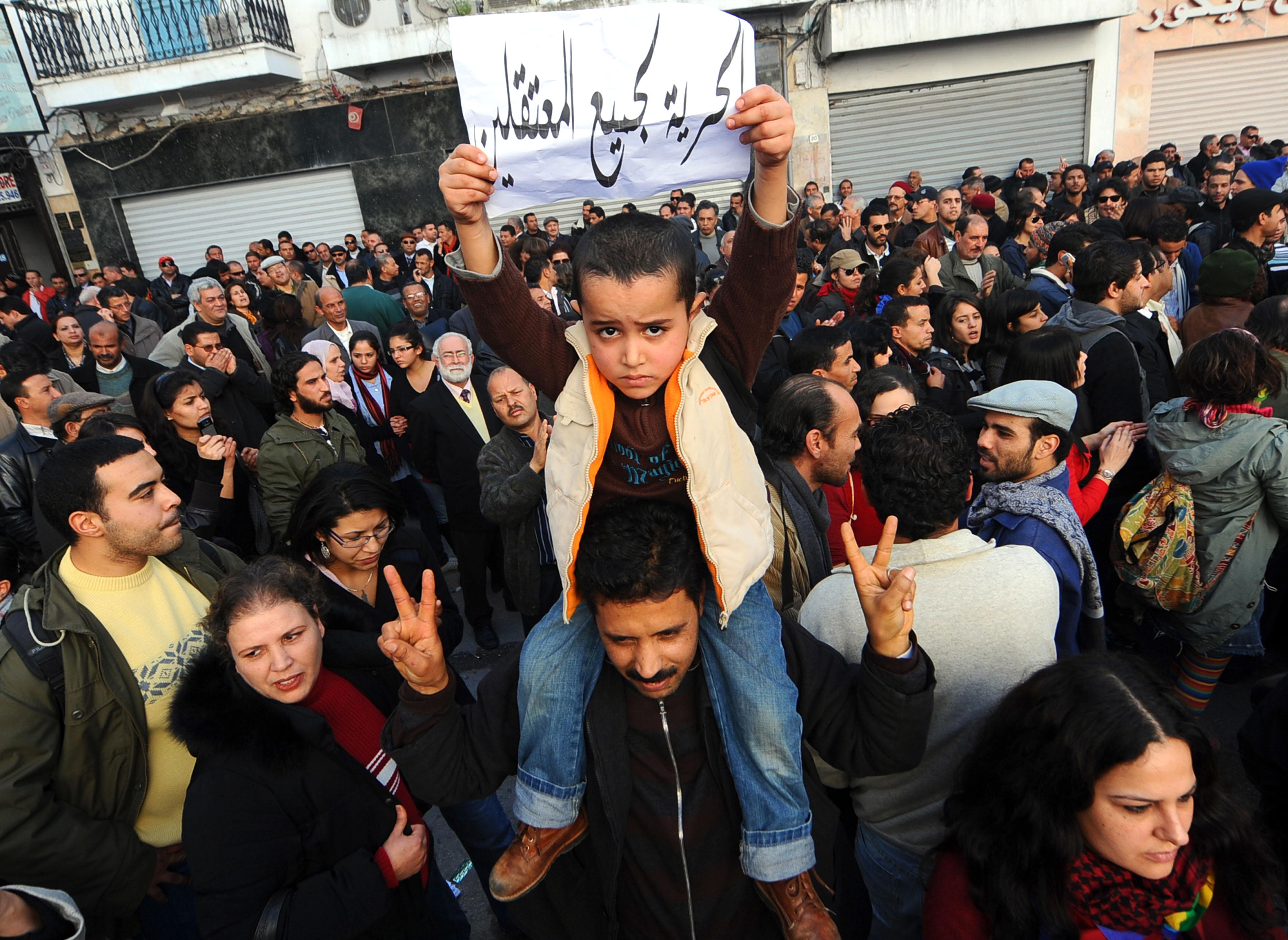Washington-based NGO Freedom House is out with its annual, widely cited Freedom in the World report today, and the main takeaway is that “more aggressive tactics by authoritarian regimes and an upsurge in terrorist attacks contributed to a disturbing decline in global freedom” in 2014.
Uplifting! But there is one bright spot in the report, which classifies countries as “free,” “partly free,” or “not free”: Tunisia, which became the first Arab country classified as free since the beginning of Lebanon’s civil war 40 years ago. Freedom House notes that “the improvements that pushed it into the Free category included a progressive constitution adopted in January 2014 and well-regarded elections for parliament and president later in the year.” In a month that has seen the collapse of the Yemeni government, more crackdowns on dissent in Egypt, and worsening violence in Libya, this is a welcome acknowledgment of the Arab Spring’s lone democratic success story.
So what made Tunisia different? An essay last October by Princeton historian L. Carl Brown offered a few explanations. Some factors are structural. Tunisia is a relatively small country without major geographical boundaries, meaning the entire country can be governed fairly easily from the capital. It’s also, as Brown puts it, “ethnically, religiously and linguistically unified.” So it was always less likely to see the sectarian divides and competing power centers that have plagued Yemen and Libya.
Longtime dictator Zine el-Abidine Ben Ali also fled the country relatively quickly in 2011—less than a month after protests began—so Tunisia was spared the rioting and violent crackdowns seen elsewhere. The country’s military was also less integral to Ben Ali’s power structure than in Egypt, and did little to either protect him or try to take power once he left.
The Islamist Ennahda party that won the first legislative elections after the uprising was also more committed to democracy than some of its counterparts elsewhere. Ennahda was “as ‘moderate’ as you can probably get in the Arab world and still call yourself Islamist,” in the words of Brookings scholar Shadi Hamid, a leading commentator on political Islam.
Critics did accuse Ennahda of trying to push an Islamist agenda in drafting the county’s new constitution and pack the government with its supporters. But, under President Moncef Marzouki, Ennahda showed that an Islamist party can also be democratic by forming coalitions with secular parties, compromising on the constitution, and, most importantly, stepping down in 2013. Marzouki also conceded gracefully after his defeat in a presidential election last October.
Things haven’t gone entirely smoothly in Tunisia. In 2013 two liberal opposition politicians were assassinated, allegedly by Islamist extremists, and some supporters blamed Ennahda for allowing radicals to operate with impunity. Last year saw one of the worst terrorist attacks in the country’s history when 14 troops were killed by suspected al-Qaida gunmen.
There are also concerns about a return to secular single-party rule. The new president, 88-year-old Beji Caid Essebsi, who won on promises of a return to peace and stability, served under both Ben Ali and his predecessor Habib Bourguiba, and his party also holds power in parliament. Economic growth remains slow, and unemployment is high.
Still, the predictions often voiced over the past few years that the country’s democratic transition would go off the rails haven’t come to pass. Tunisia is still the Arab Spring’s lone success story. The problem, for those who would seek to apply lessons of the “Tunisia model” elsewhere, is that the circumstances that allowed this to happen are pretty specific and hard to replicate.
